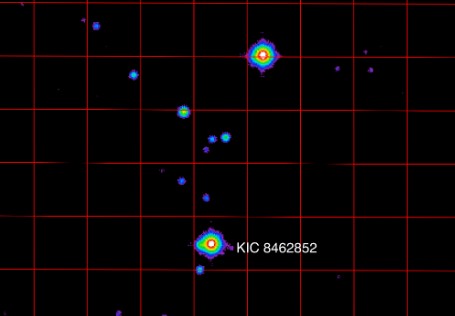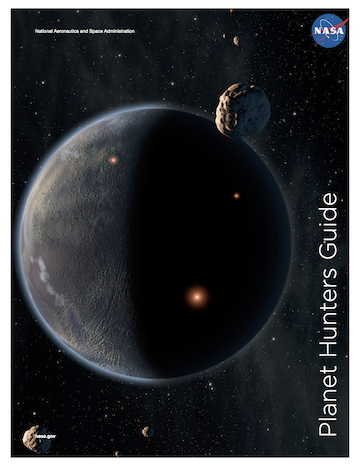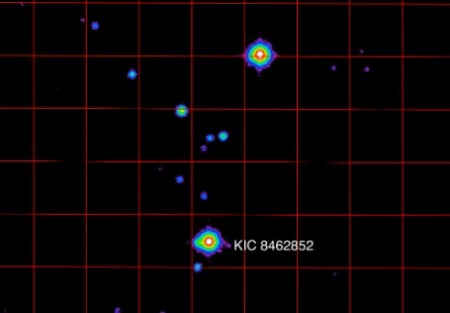October 14, 2015 – The Kepler Space Telescope has provided evidence to show that planets orbiting stars is not a unique phenomenon. We know that the Solar System is just one of many. But one star that Kepler observed for four years is “really weird” accordint to Tabetha Boyajian, a postdoc in the Department of Astronomy, Yale University, and lead author in a paper entitled “Planet Hunters X. KIC 8462852 – Where’s the flux?”
If you are not familiar with Planet Hunters, it is an initiative to enlist the public to search data from Kepler to identify stars exhibiting a pattern suggesting a transiting planet. Kepler has spawned so much data that astronomers cannot possibly catch all the light dips that the space telescope observes. But the public can, at leisure, discern patterns in the data looking for repeated planetary transits in front of distant stars. The result, just under 300,000 people to date from all around the world have helped to identify almost one hundred new planets.
Among them is KIC 8462852 is presenting a mystery. It doesn’t exhibit the normal light dip of a transiting planet. Described as “bizarre,” Planet Hunters have studied four years of Kepler data as well ground and space observations. The star is classified an M-dwarf. It has no visible companion star which could explain the light-blocking observations. The star, seen in the image below, is displays a distinct protrusion on its left side. The light signature indicates no excess infrared associated with newly formed stars that have clumpy dust clouds accompanying them. And yet it appears to have clumpy objects in orbit around it.
So what could explain what is being observed? A few natural explanations described in the paper mentioned above include:
- the light dipping variability may originate in the star itself suggesting fluctuating energy output
- the proximity of an unobserved companion such as a brown dwarf could in transit cause a change in the light signature
- a large amount of dust distributed in clumps around the star could possibly explain it (usually associated with young stars)
- an impact with the stellar mass causing ejection of material temporarily into orbit around it
- a comet family that has arrived near the star during the period of our observation
- extra-stellar comets triggered by a passing star appearing in near proximity causing light fluctuations
The problem with all these scenarios is they don’t adequately explain the phenomenon being observed. But SETI, the Search for Extra-Terrestrial Intelligence, may have an answer – an advanced technical civilization.
SETI researchers have proposed that extraterrestrial civilizations more advanced than ours might place massive objects in orbit around a star to harvest as much of its energy and light as possible. Jason Wright, an astronomer at Penn State University, argues that KIC 8462852 may be the home of such a civilization placing a “swarm of megastructures” around the star. Interestingly three astronomers including Boyajian and Wright have put together a proposal to point a large radio telescope at the star to try and capture radio wave frequencies which would indicate the presence of a technological civilization. If that study detects radio waves then they would request the use of the Very Large Array in New Mexico to further their investigation.
Can you imagine capturing the first radio waves of the alien equivalent of an “I Love Lucy“ episode? Now that would be something.











